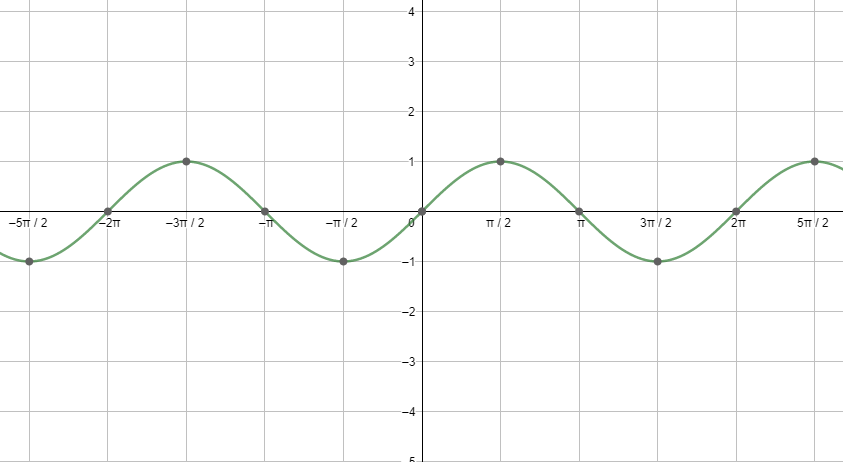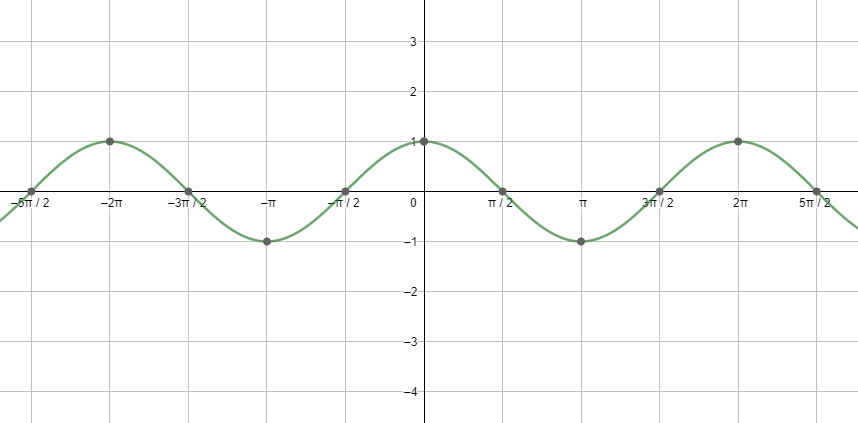Question
Question: If \(x=\cos 10{}^\circ \cos 20{}^\circ \cos 40{}^\circ \) , then the value of x is (a) \(\dfrac{1}...
If x=cos10∘cos20∘cos40∘ , then the value of x is
(a) 41tan10∘
(b) 81cot10∘
(c) 81cos10∘
(d) 81sec10∘
Solution
Hint: Start by dividing and multiplying the right-hand side of the equation by 2sin10∘ followed by the use of the formula of sin2A. Finally, use the property that trigonometric ratios are periodic functions and the knowledge of complementary angles related to trigonometric ratios to reach the answer.
Complete step-by-step answer:
Before moving to the solution, let us discuss the periodicity of sine and cosine function, which we would be using in the solution. All the trigonometric ratios, including sine and cosine, are periodic functions. We can better understand this using the graph of sine and cosine.
First, let us start with the graph of sinx.

Next, let us see the graph of cosx.

Looking at both the graphs, we can say that the graphs are repeating after a fixed period i.e. 2πc . So, we can say that the fundamental period of the cosine function and the sine function is 2πc=360∘ . So, we can mathematically show it as:
sin(2πc+x)=sin(360∘+x)=sinx
cos(2πc+x)=cos(360∘+x)=cosx
Also, some other results to remember are:
sin(2πc−x)=sin(90∘−x)=cosx
cos(2πc−x)=cos(90∘−x)=sinx
We will now solve the equation given in the question.
∴x=cos10∘cos20∘cos40∘
Now we will multiply and divide the right-hand side of the equation by 2sin10∘ . On doing so, our equation becomes:
x=2sin10∘2sin10∘cos10∘cos20∘cos40∘
We know sin2A=2sinAcosA, applying this to our equation, we get
x=2sin10∘sin20∘cos20∘cos40∘
Now, dividing and multiplying the right-hand side of the equation by 2 and using the formula of sin2A, we get
x=2×2sin10∘2sin20∘cos20∘cos40∘
⇒x=4sin10∘sin40∘cos40∘
Again, dividing and multiplying the right-hand side of the equation by 2 and using the formula of sin2A, we get
x=2×4sin10∘2sin40∘cos40∘
⇒x=8sin10∘sin80∘
We know sin(2πc−x)=sin(90∘−x)=cosx , so, our equation becomes:
x=8sin10∘sin(90∘−10∘)
⇒x=8sin10∘cos10∘
We know cotA=sinAcosA , applying this to our expression, we get
x=81×sin10∘cos10∘
x=81cot10∘
Therefore, the answer to the above question is option (b).
Note: It is useful to remember the graph of the trigonometric ratios along with the signs of their values in different quadrants. For example: sine is always positive in the first and the second quadrant while negative in the other two. Also, remember the property of complementary angles of trigonometric ratios.
